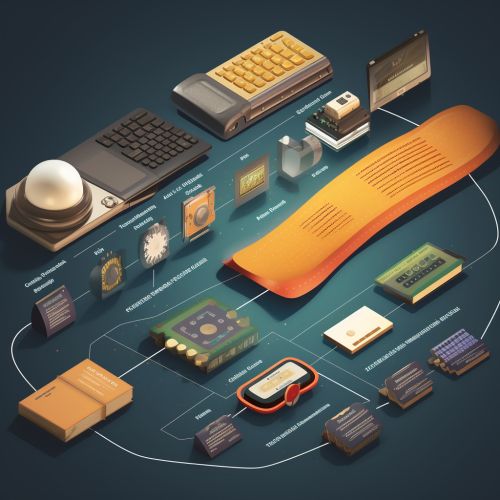Data storage
Overview
Data storage refers to the use of recording media to retain data using computers or other devices. The most prevalent forms of data storage are file storage, block storage, and object storage, with each being ideal for different purposes. The choice between these types of storage often depends on the specific requirements of the users, such as the need for data redundancy, the speed of data access, and the amount of data to be stored.
History of Data Storage
The history of data storage is marked by the evolution from punch cards used in the early 19th century to today's use of cloud storage and solid-state drives (SSDs).
Punch Cards
The earliest form of data storage was the punch card, invented by Herman Hollerith in the 1880s. These cards stored information in the form of holes punched in specific locations.
Magnetic Tape
In the mid-20th century, magnetic tape was introduced as a data storage medium. This technology allowed for the storage of larger amounts of data than punch cards, and it was widely used in early computers.
Hard Disk Drives
The 1950s saw the introduction of the hard disk drive (HDD), a device that uses magnetic storage to store and retrieve digital information. HDDs have been a mainstay of data storage due to their balance of cost and performance.
Optical Discs
In the late 20th century, optical discs, such as CDs and DVDs, became popular for storing data. These discs use lasers to read and write data.
Solid-State Drives
In recent years, SSDs have gained popularity. Unlike HDDs, which use moving parts to read and write data, SSDs store data on flash memory chips, resulting in faster data access speeds.
Cloud Storage
Cloud storage has become increasingly popular in the 21st century. This form of data storage allows data to be stored on remote servers accessed via the internet, providing flexibility and scalability.


Types of Data Storage
There are three main types of data storage: file storage, block storage, and object storage. Each type has its own advantages and disadvantages, and the best choice depends on the specific use case.
File Storage
File storage, or file-level storage, organizes and represents data as a hierarchy of files in folders. It is a simple and straightforward method of storing data, and it is widely used in personal computers and network-attached storage (NAS) devices.
Block Storage
Block storage, or block-level storage, splits data into uniformly sized blocks of data, each with its own address but with no additional information (metadata) to provide more context. This type of storage is commonly used in storage area network (SAN) environments.
Object Storage
Object storage, also known as object-based storage, manages data as objects. Each object includes the data, metadata, and a globally unique identifier. Object storage is highly scalable and is commonly used for storing large amounts of unstructured data.
Future of Data Storage
The future of data storage lies in technologies that can accommodate the exponential growth of data. These include DNA data storage, holographic data storage, and atomic data storage.
DNA Data Storage
DNA data storage is a technique for storing data as a sequence of DNA bases. This method has the potential to store vast amounts of data in a tiny space for a long duration.
Holographic Data Storage
holographic data storage is a potential technology for storing data in three dimensions, using holography. This could dramatically increase storage capacity.
Atomic Data Storage
Atomic data storage involves storing data on the atomic level. This is a theoretical concept at present, but it could provide incredibly high storage densities in the future.
